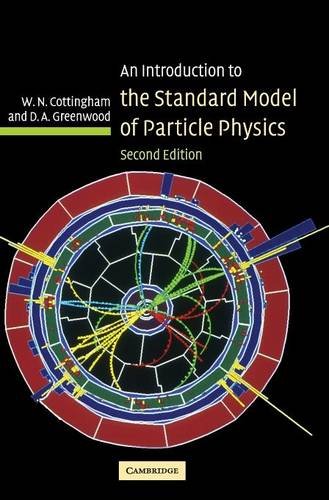An Introduction to the Standard Model of Particle Physics pdf free
Par hubble roxanne le mercredi, mars 1 2017, 21:27 - Lien permanent
An Introduction to the Standard Model of Particle Physics. D. A. Greenwood, W. N. Cottingham

An.Introduction.to.the.Standard.Model.of.Particle.Physics.pdf
ISBN: 0521852498,9780521852494 | 294 pages | 8 Mb

An Introduction to the Standard Model of Particle Physics D. A. Greenwood, W. N. Cottingham
Publisher: Cambridge University Press
Particle Physics: Standard Model Video Lectures, Stanford Online Course, free tutorials and lecture notes, free download, Educational Lecture Videos. In the standard model of particle physics (with 0-dimensional particles) things only interact if they bash right into each other, whereas, in the string world, objects (strings) interact in a more subtle, well, stringy kind of way. What exactly is the Higgs boson? �Physics” is the study of Nature and natural phenomena. Free Courses In Physics | Physics: An Introduction History of Physics: Ancient This led to the so-called Standard Model of particle physics in the 1970s, which successfully describes all the elementary particles observed to date. Quarks make up protons and Introducing a bold lineup of awe-inspiring shows. This advanced summer school on LHC Physics will cover a broad spectrum of experimental and theoretical activity in particle physics, from the searches for the Higgs boson and physics beyond the Standard Model, to studies of Quantum Chromodynamics, the B-physics sector and The lectures and informal discussions are by recognised leaders in their field and include an introduction to the LHC itself as well as the theoretical and phenomenological framework of hadron collisions. The goal is to discover hints of physics beyond the Standard Model of particle physics – but tantalizing glimpses of new physics have been harder to spot than many physicists had expected. An Introduction to the Standard Model of Particle Physics, 2nd edition. The paper reviews philosophical aspects of the Higgs mechanism as the presently preferred account of the generation of particle masses in the Standard Model of elementary particle physics and its most discussed extensions. Cambridge: Cambridge University Press. The Standard Model has been fantastically successful, in that it is capable of predicting how particles will behave to very high accuracy. Here's the gist of the standard model, which was developed in the early 1970s: Our entire universe is made of 12 different matter particles and four forces [source: European Organization for Nuclear Research]. It comes in myriad incarnations. Read more about the Higgs boson and why its existence is important in particle physics. Here A, C and D are heavy new-physics particles and j stands for a quark jet. �This, perhaps, shows that we should take a step back and start thinking anew on the problems for which SUSY-based phenomenology was introduced,” Shifman said. Introduction to Elementary Particles. Among those 12 particles, you'll encounter six quarks and six leptons. So far, no hints of “new physics” beyond the Standard Model — the accepted set of equations describing the known elementary particles — have shown up in experiments at the Large Hadron Collider, operated by the European research laboratory CERN outside Geneva, or anywhere else.